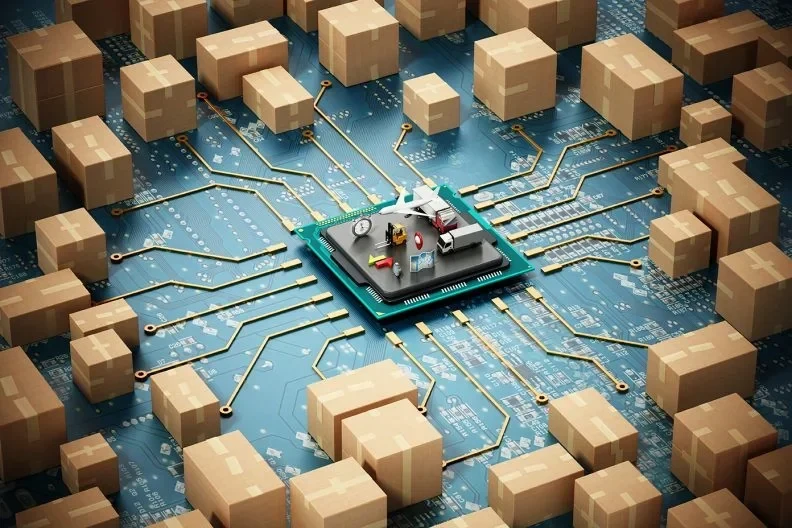Beyond its traditional role as a vessel, packaging is becoming an interactive gateway, thanks to the integration of connected technologies.

In an era where technology weaves seamlessly into the fabric of our daily lives, it comes as no surprise that innovation has reached even the most unassuming realms, including packaging.
The traditional role of packaging as a mere container has evolved into a dynamic interface, thanks to the integration of connected technologies.
In this article, we delve into the fascinating world of connected packaging innovations, exploring the trends, benefits, and the potential impact on industries.
The rise of connected packaging
Connected packaging, also known as smart packaging, refers to the integration of digital elements into traditional packaging.
This incorporation of technology can take various forms, including RFID tags, QR codes, NFC (Near Field Communication) chips, and augmented reality (AR).
The goal is to transform the packaging into an interactive platform that engages consumers and provides valuable information beyond what meets the eye.
Enhancing consumer engagement
One of the primary drivers behind the adoption of connected packaging is the desire to enhance consumer engagement. Traditional packaging has limited capabilities in conveying information beyond the basics like product name and instructions.
Connected packaging, on the other hand, opens up a realm of possibilities.
Through QR codes or NFC technology, consumers can easily access a wealth of information about the product, from its origin and manufacturing process to sustainability practices.
This transparency fosters trust and empowers consumers to make informed choices. Brands are increasingly recognising the value of establishing a direct and interactive connection with their customer base.
Smart labels and RFID technology
Radio-Frequency Identification (RFID) technology has emerged as a game-changer in the realm of connected packaging. Smart labels equipped with RFID tags enable real-time tracking of products throughout the supply chain.
This not only helps in inventory management but also allows brands and retailers to monitor the conditions in which products are stored and transported.
For consumers, RFID technology translates into a more seamless and secure shopping experience. Imagine a scenario where a simple wave of your smartphone over a product’s RFID tag provides you with a detailed product history, including its journey from production to delivery.
This not only ensures product authenticity but also adds a layer of convenience to the consumer experience.
Unlocking interactive experiences with AR
Augmented Reality (AR) is another captivating facet of connected packaging. By scanning a product’s packaging with a smartphone or tablet, consumers can unlock immersive and interactive experiences.
This can range from virtual product demonstrations and 3D visualisations to gamified content that adds an element of fun to the shopping experience.
For example, a cosmetics brand might offer customers the ability to virtually try on different shades of lipstick through AR before making a purchase.
This not only engages consumers but also reduces the likelihood of post-purchase dissatisfaction, as customers can make more informed decisions about the products they choose.
Sustainability and traceability
Connected packaging also plays a crucial role in addressing the growing demand for sustainability and traceability. By incorporating technology like QR codes or RFID tags, brands can provide consumers with detailed information about a product’s environmental impact.
This transparency allows eco-conscious consumers to make choices aligned with their values. Furthermore, traceability features enable quick identification of the product’s origin, aiding in the tracking of supply chain practices.
This is particularly significant in industries such as food and pharmaceuticals, where ensuring the authenticity and safety of products is paramount.
Challenges and considerations
While the potential benefits of connected packaging are immense, there are challenges to address. Privacy concerns, data security, and the environmental impact of electronic components are some of the key considerations.
Striking a balance between technological innovation and responsible practices is crucial to ensure the widespread acceptance of connected packaging solutions.
Sustainability and traceability
Connected packaging also plays a crucial role in addressing the growing demand for sustainability and traceability. By incorporating technology like QR codes or RFID tags, brands can provide consumers with detailed information about a product’s environmental impact.
This transparency allows eco-conscious consumers to make choices aligned with their values. Furthermore, traceability features enable quick identification of the product’s origin, aiding in the tracking of supply chain practices.
This is particularly significant in industries such as food and pharmaceuticals, where ensuring the authenticity and safety of products is paramount.
The future landscape of connected packaging
As technology continues to evolve, the landscape of connected packaging is poised for further transformation. The integration of artificial intelligence (AI) and the Internet of Things (IoT) will likely bring about more sophisticated and personalised experiences.
Imagine a future where packaging not only provides information but also adapts to individual preferences and offers tailored recommendations.
In conclusion, connected packaging innovations are ushering in a new era where the once-static role of packaging becomes a dynamic interface between brands and consumers.
The potential to enhance consumer engagement, provide transparency, and contribute to sustainability makes connected packaging a compelling avenue for exploration.
As industries continue to embrace these innovations, the world of packaging is set to evolve, offering not just containment but a connected experience that resonates with the tech-savvy consumer of today and tomorrow.
Source from Packaging Gateway
Disclaimer: The information set forth above is provided by packaging-gateway.com independently of Alibaba.com. Alibaba.com makes no representation and warranties as to the quality and reliability of the seller and products.




